-
 Bitcoin
Bitcoin $82,099.5826
-1.34% -
 Ethereum
Ethereum $1,817.9545
-1.07% -
 Tether USDt
Tether USDt $0.9999
0.02% -
 XRP
XRP $2.0815
-3.96% -
 BNB
BNB $595.8647
-1.53% -
 Solana
Solana $124.0327
-0.92% -
 USDC
USDC $1.0000
0.01% -
 Dogecoin
Dogecoin $0.1634
-3.94% -
 Cardano
Cardano $0.6445
-4.65% -
 TRON
TRON $0.2336
1.34% -
 Toncoin
Toncoin $3.9381
2.61% -
 Chainlink
Chainlink $13.2201
-3.75% -
 UNUS SED LEO
UNUS SED LEO $9.0947
-5.84% -
 Stellar
Stellar $0.2646
-1.90% -
 Avalanche
Avalanche $18.6234
-3.91% -
 Shiba Inu
Shiba Inu $0.0...01214
-3.88% -
 Sui
Sui $2.2126
-6.78% -
 Hedera
Hedera $0.1604
-6.61% -
 Polkadot
Polkadot $4.0237
-1.97% -
 Litecoin
Litecoin $82.1655
-4.48% -
 MANTRA
MANTRA $6.2849
-1.13% -
 Bitcoin Cash
Bitcoin Cash $298.8203
-2.66% -
 Dai
Dai $1.0000
0.02% -
 Bitget Token
Bitget Token $4.4293
-4.57% -
 Ethena USDe
Ethena USDe $1.0000
0.01% -
 Pi
Pi $0.6976
-9.77% -
 Hyperliquid
Hyperliquid $12.5853
-0.74% -
 Monero
Monero $215.4717
-0.22% -
 Uniswap
Uniswap $5.8825
-1.85% -
 Aptos
Aptos $5.1958
-2.29%
How to use the API function of Bybit Wallet?
Bybit's Wallet API enables developers to automate fund management tasks like checking balances and withdrawing funds, emphasizing the need for robust security practices.
Mar 28, 2025 at 08:29 pm
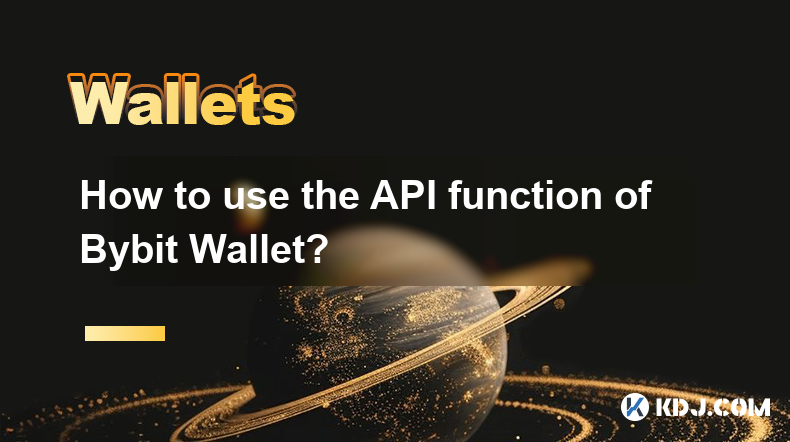
Bybit, a popular cryptocurrency exchange, offers a robust API (Application Programming Interface) for its wallet, allowing users to programmatically interact with their funds and account information. This guide explains how to use the Bybit Wallet API, covering key aspects and addressing common concerns.
Understanding Bybit Wallet API Fundamentals
The Bybit Wallet API allows developers to build applications that automate various tasks related to managing their Bybit accounts. This includes checking balances, placing orders, withdrawing funds, and more. Before using the API, you must understand its limitations and security implications. Always prioritize security best practices when working with APIs, as unauthorized access could result in significant financial losses. Remember to keep your API keys confidential and secure.
Accessing Your Bybit API Keys
To start using the Bybit Wallet API, you first need to generate API keys within your Bybit account. This is usually done in the "API Management" section of your account settings. You'll be prompted to create a unique key pair: an API key and a secret key. Treat your secret key like a password; never share it with anyone. Bybit offers different levels of API permissions, so choose the appropriate level for your needs.
Authenticating with the Bybit Wallet API
Bybit's API utilizes a standard authentication method, typically involving HTTP requests with your API key and secret key included in the headers or as parameters. The specific authentication method is detailed in Bybit's official API documentation. Failure to authenticate correctly will result in API requests being rejected. Refer to Bybit's official documentation for the most up-to-date and accurate information on authentication methods.
Making API Calls to Bybit Wallet
Once authenticated, you can make API calls to interact with your Bybit Wallet. These calls typically involve sending HTTP requests (GET, POST, DELETE, etc.) to specific endpoints defined in the API documentation. Each endpoint corresponds to a specific action, such as retrieving account balances or placing a withdrawal request. Always test your API calls in a sandbox environment before deploying them to a production environment. This will help you identify and resolve any issues without risking your real funds.
Retrieving Account Information
The Bybit Wallet API provides endpoints to retrieve various account information, including:
- Account Balance: Fetch the current balance of your various assets in your Bybit Wallet.
- Transaction History: Access a detailed history of all transactions associated with your account.
- Withdrawal History: Review the history of all withdrawals you've made from your Bybit Wallet.
- Deposit History: View a record of all deposits made to your Bybit Wallet.
Managing Funds with the Bybit Wallet API
The Bybit Wallet API allows for programmatic management of your funds, subject to Bybit's security and withdrawal limits. This includes:
- Placing Withdrawal Requests: Initiate withdrawals to external wallets, specifying the cryptocurrency, amount, and destination address. Double-check all withdrawal details before submitting the request. Incorrect information could lead to irreversible loss of funds.
- Checking Withdrawal Status: Monitor the status of your pending withdrawal requests.
Error Handling and Rate Limiting
When working with the Bybit Wallet API, it's crucial to implement proper error handling. The API will return error codes and messages to indicate any issues with your requests. Additionally, Bybit enforces rate limits to prevent abuse. Understand and respect these rate limits to avoid temporary API access restrictions. Implement appropriate retry mechanisms in your code to handle temporary errors and rate limiting.
Security Best Practices for Bybit Wallet API
Security is paramount when using any API, especially one that manages cryptocurrency funds. Consider these best practices:
- Use a strong, unique password for your Bybit account.
- Enable two-factor authentication (2FA) for enhanced security.
- Store your API keys securely, ideally using a dedicated secrets management system.
- Regularly review your API key usage and revoke any keys that are no longer needed.
- Use HTTPS for all API communication to encrypt your data in transit.
- Implement robust input validation and sanitization to prevent vulnerabilities like SQL injection.
Programming Languages and Libraries
The Bybit Wallet API is accessible using various programming languages. Many popular languages have libraries that simplify API interaction. These libraries handle authentication, request formatting, and response parsing, making development easier. Choosing the right library will depend on your preferred programming language and development environment. Consult Bybit's documentation for recommended libraries and examples.
Bybit Wallet API Documentation
Bybit provides comprehensive API documentation detailing all endpoints, request parameters, response formats, and error codes. Always refer to the official documentation for the most up-to-date information. The documentation is usually available on Bybit's developer portal. It often includes code samples in various programming languages to assist with implementation.
Common Questions and Answers
Q: What happens if I lose my API secret key?
A: If you lose your API secret key, you must generate a new key pair. You will no longer be able to use the old key.
Q: Are there any fees associated with using the Bybit Wallet API?
A: Generally, there are no direct fees for using the Bybit Wallet API itself. However, standard transaction fees may apply for withdrawals and other actions.
Q: What are the rate limits for the Bybit Wallet API?
A: The specific rate limits are defined in Bybit's API documentation. They vary depending on the endpoint and the type of request.
Q: How do I handle errors returned by the Bybit Wallet API?
A: Bybit's API documentation provides details on error codes and messages. Your code should handle these errors gracefully, perhaps by retrying requests after a delay or logging the error for debugging.
Q: What security measures should I take to protect my API keys?
A: Never share your API keys with anyone. Store them securely, ideally using a dedicated secrets management system. Use HTTPS for all API communication. Regularly review and revoke any keys that are no longer needed.
Q: Can I use the Bybit Wallet API to automate trading?
A: While the Bybit Wallet API primarily focuses on managing funds, it can be used in conjunction with Bybit's trading API to create automated trading bots. However, this requires more advanced programming skills and a thorough understanding of both APIs.
Disclaimer:info@kdj.com
The information provided is not trading advice. kdj.com does not assume any responsibility for any investments made based on the information provided in this article. Cryptocurrencies are highly volatile and it is highly recommended that you invest with caution after thorough research!
If you believe that the content used on this website infringes your copyright, please contact us immediately (info@kdj.com) and we will delete it promptly.
- CZ Announces Plan to Donate 500 BNB Each to Myanmar and Thailand
- 2025-03-31 20:00:12
- Bitcoin (BTC -2.46%) has earned a place in almost every investor's portfolio.
- 2025-03-31 20:00:12
- Bitcoin (BTC) ETF Witnessed a Major Shift as Investors Pulled out $93 Million
- 2025-03-31 19:55:12
- Nigeria Accuses Binance of Facilitating Terrorism and Kidnapping Financing
- 2025-03-31 19:55:12
- A Sentiment Shift Appears Underway Within the XRP Community
- 2025-03-31 19:50:12
- A Quarter of S&P 500 Firms Could Be Holding Bitcoin on Their Balance Sheets by 2030: Report
- 2025-03-31 19:50:12
Related knowledge
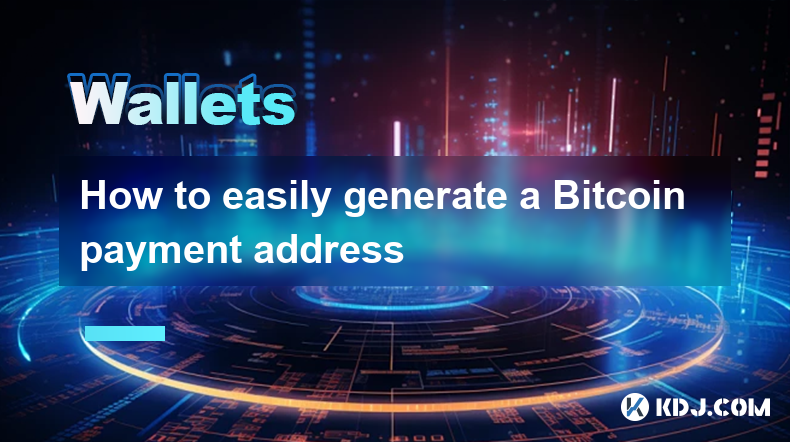
How to easily generate a Bitcoin payment address
Mar 29,2025 at 10:49am
Generating a Bitcoin payment address might seem daunting, but it's actually quite straightforward. This process is crucial for receiving Bitcoin, as each transaction requires a unique address. Understanding how this works is fundamental to using Bitcoin effectively. This guide will walk you through the simple steps, regardless of your technical experti...
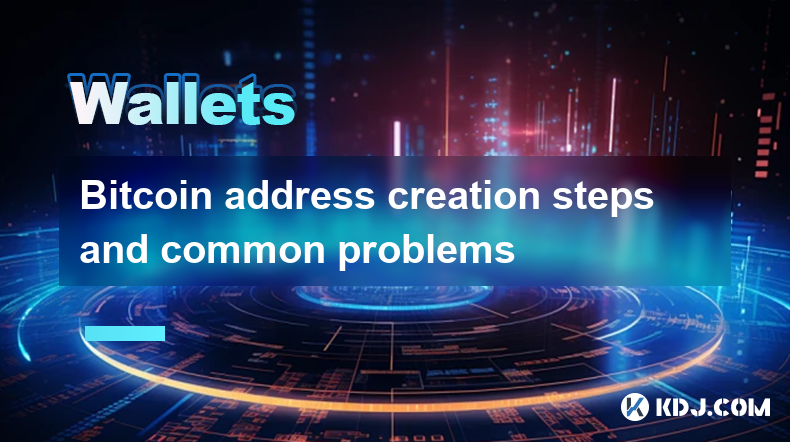
Bitcoin address creation steps and common problems
Mar 30,2025 at 06:07am
Understanding Bitcoin AddressesA Bitcoin address is a unique identifier, similar to a bank account number, used to receive Bitcoin. It's a string of alphanumeric characters generated from a public key, derived from your private key. Understanding the distinction between public and private keys is crucial for Bitcoin security. Your private key should be...
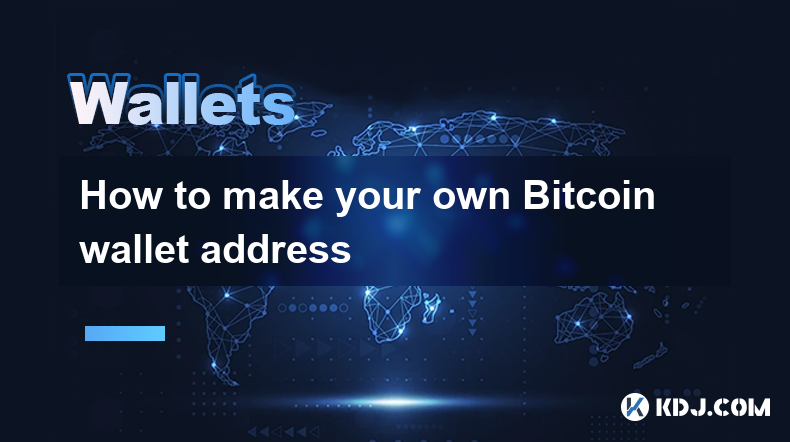
How to make your own Bitcoin wallet address
Mar 29,2025 at 08:42pm
Creating your own Bitcoin wallet address is crucial for securing and managing your Bitcoin holdings. It allows you to independently receive and send Bitcoin without relying on third-party services. This process involves understanding the different types of wallets and choosing the one that best suits your needs and technical expertise. Incorrectly gene...
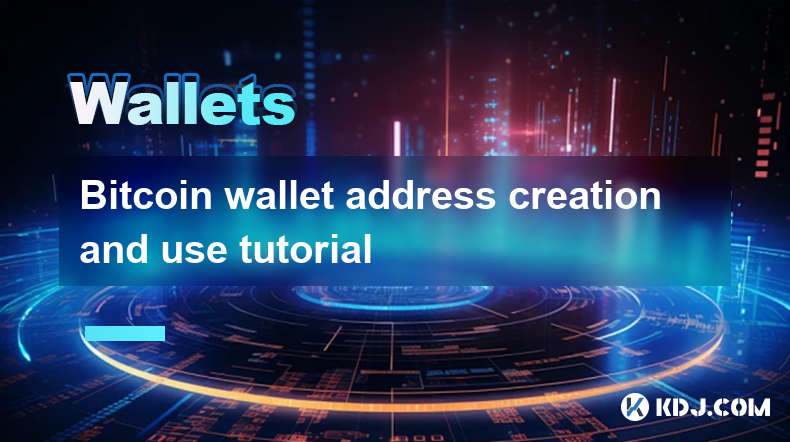
Bitcoin wallet address creation and use tutorial
Mar 29,2025 at 10:14pm
Understanding Bitcoin Wallet AddressesA Bitcoin wallet doesn't store Bitcoin in the way a traditional bank account does. Instead, it stores private keys, which are cryptographic secrets allowing you to access and spend your Bitcoin. Your Bitcoin address, on the other hand, is a public identifier, like an email address, that others can use to send you B...

Bitcoin address generation and secure storage guide
Mar 30,2025 at 08:07am
Understanding Bitcoin AddressesA Bitcoin address is essentially your public key, a string of alphanumeric characters used to receive Bitcoin. It's analogous to your bank account number. Unlike your private key, which is crucial for spending your Bitcoin, your address can be shared publicly without compromising your funds. Generating a new address is sim...
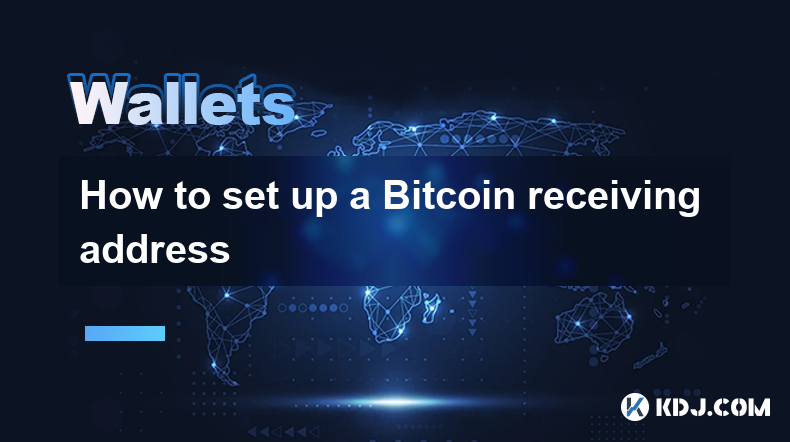
How to set up a Bitcoin receiving address
Mar 30,2025 at 06:14pm
Understanding Bitcoin Receiving AddressesA Bitcoin receiving address is essentially your unique identifier on the Bitcoin network. It's a string of alphanumeric characters that allows others to send Bitcoin to you. Think of it like your bank account number, but specifically for Bitcoin. You need a receiving address to receive Bitcoin. Crucially, you ca...

How to easily generate a Bitcoin payment address
Mar 29,2025 at 10:49am
Generating a Bitcoin payment address might seem daunting, but it's actually quite straightforward. This process is crucial for receiving Bitcoin, as each transaction requires a unique address. Understanding how this works is fundamental to using Bitcoin effectively. This guide will walk you through the simple steps, regardless of your technical experti...

Bitcoin address creation steps and common problems
Mar 30,2025 at 06:07am
Understanding Bitcoin AddressesA Bitcoin address is a unique identifier, similar to a bank account number, used to receive Bitcoin. It's a string of alphanumeric characters generated from a public key, derived from your private key. Understanding the distinction between public and private keys is crucial for Bitcoin security. Your private key should be...

How to make your own Bitcoin wallet address
Mar 29,2025 at 08:42pm
Creating your own Bitcoin wallet address is crucial for securing and managing your Bitcoin holdings. It allows you to independently receive and send Bitcoin without relying on third-party services. This process involves understanding the different types of wallets and choosing the one that best suits your needs and technical expertise. Incorrectly gene...

Bitcoin wallet address creation and use tutorial
Mar 29,2025 at 10:14pm
Understanding Bitcoin Wallet AddressesA Bitcoin wallet doesn't store Bitcoin in the way a traditional bank account does. Instead, it stores private keys, which are cryptographic secrets allowing you to access and spend your Bitcoin. Your Bitcoin address, on the other hand, is a public identifier, like an email address, that others can use to send you B...

Bitcoin address generation and secure storage guide
Mar 30,2025 at 08:07am
Understanding Bitcoin AddressesA Bitcoin address is essentially your public key, a string of alphanumeric characters used to receive Bitcoin. It's analogous to your bank account number. Unlike your private key, which is crucial for spending your Bitcoin, your address can be shared publicly without compromising your funds. Generating a new address is sim...

How to set up a Bitcoin receiving address
Mar 30,2025 at 06:14pm
Understanding Bitcoin Receiving AddressesA Bitcoin receiving address is essentially your unique identifier on the Bitcoin network. It's a string of alphanumeric characters that allows others to send Bitcoin to you. Think of it like your bank account number, but specifically for Bitcoin. You need a receiving address to receive Bitcoin. Crucially, you ca...
See all articles






















































































